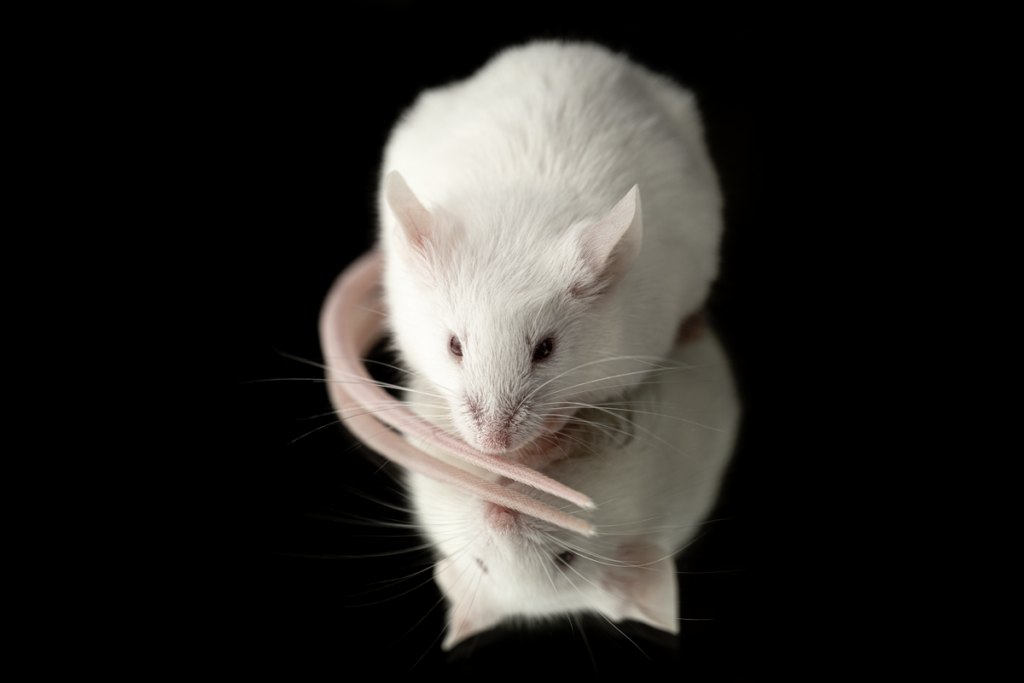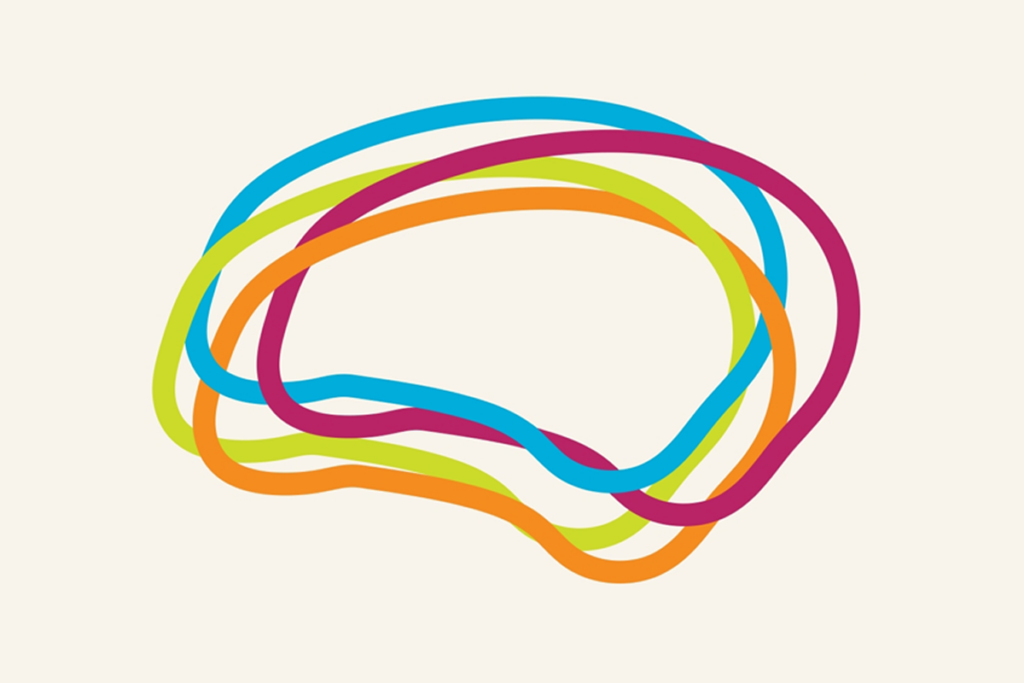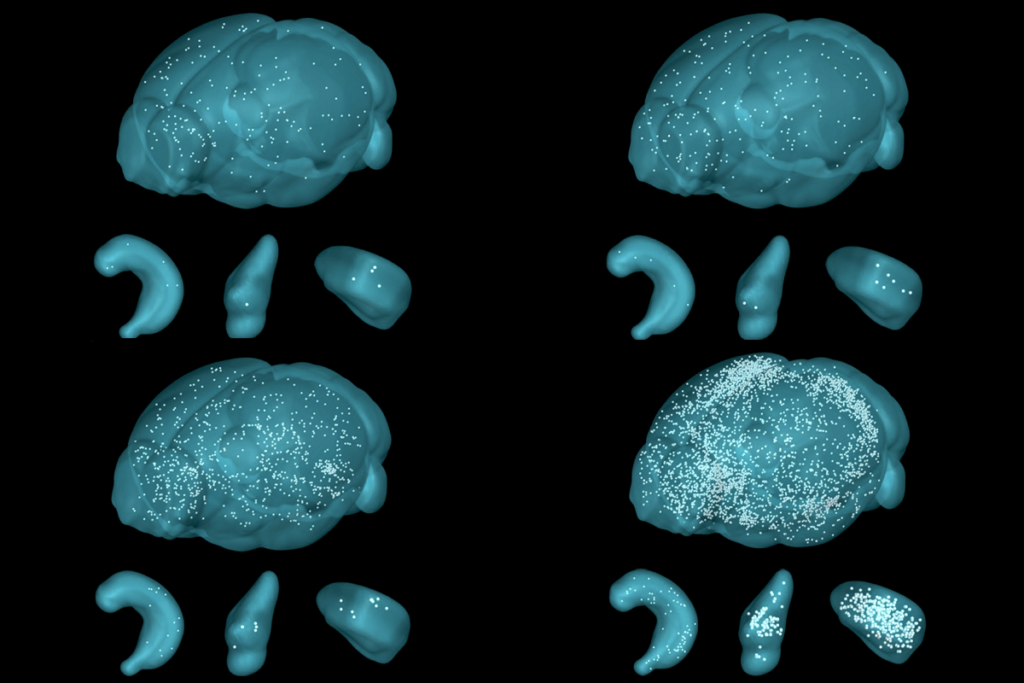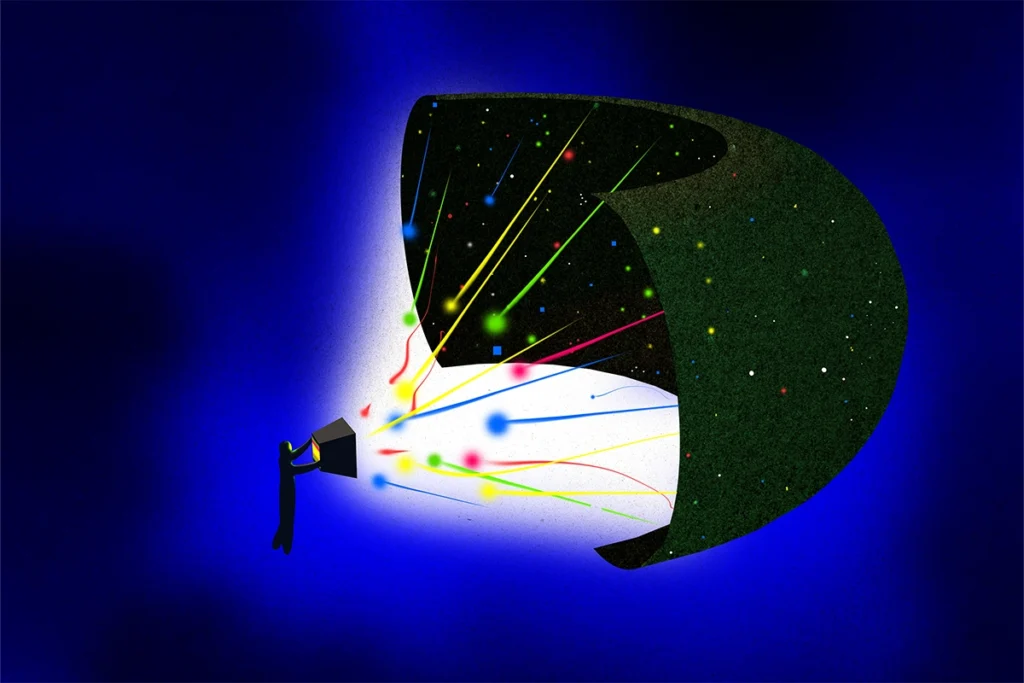Expanded view of hippocampal function comes into focus
After decades of debate, the region’s role is being rewritten. Rather than using sensory input to simply log key points in time and space, the hippocampus may serve to contextualize our experiences and memories—and ultimately make predictions about the future.
The tiny hippocampus, deep in the brain’s medial temporal lobe, has long resisted easy explanation. Its prominent role in navigation seems at odds with its contributions to episodic memory. It contains cognitive maps of the external world yet also stores abstract relationships between concepts, objects and events. And it actively encodes memories during our waking hours but also replays this information offline during rest.
Scientists have long debated how, or even if, the same neural circuits support such myriad tasks. Canonical models of the hippocampus posit that the horseshoe-shaped structure creates cognitive maps of space based on sensory input, taking and storing snapshots of the world. Several new lines of evidence, though, are beginning to present an expanded view of hippocampal function: This ridge of gray matter serves to contextualize our experiences and provide a scaffold onto which we can form memories—a picture that helps reconcile how the same network can represent an animal’s location and also hold rich, abstract information about its environment.
“We’re getting closer to a coherent narrative of the function of the hippocampus,” says Weinan Sun, assistant professor of neurobiology and behavior at Cornell University. “The idea that’s starting to emerge is that it relates to predictive coding and extracting states from your sensory experience.”
In mice, for instance, hippocampal activity represents the same space differently depending on the task an animal is given, according to a study Sun and his colleagues published in Nature in February and presented at this year’s Computational and Systems Neuroscience (COSYNE) annual meeting in Montreal. Similarly, in monkeys, hippocampal neurons map behaviorally significant information rather than just location, according to unpublished data presented at the same meeting. And instead of simply capturing what’s around an animal, the hippocampus makes predictions about what that animal might see in the future, according to computational modeling work presented at the meeting.
These and other studies from the past five years have challenged dominant models of the hippocampus and how it stores new information, says Sam McKenzie, assistant professor of neurosciences at the University of New Mexico, who was not involved in any of the new work. “We are all converging around this idea that the job of learning is not creating a [new] representational state but mapping a moment onto the right part of the existing representational state,” he says. “We’re reaching a really exciting place.”
These ideas aren’t new, he and others say—they have existed for decades—but they are gaining experimental traction. “These are fantastic papers,” says David Redish, professor of neuroscience at the University of Minnesota Twin Cities. “They fit into the hippocampus literature really nicely.”
P
eople who have hippocampal damage—including the famous patient H.M.—lose their ability to form long-term episodic memories but retain some ability to navigate familiar environments, studies show. At first glance, the fact that such people retain their ability to navigate doesn’t entirely mesh with the classic picture of how hippocampal cells function: In rodents, at least, place cells in the region encode an animal’s location in space; grid cells tile that space; and head direction cells reflect the orientation of the animal’s head. The rodent findings led some researchers to hypothesize that spatial navigation is the core evolutionary function of the hippocampus and that these spatial maps provide the scaffold onto which episodic memories form, but others considered spatially tuned cells a byproduct of the other computations the hippocampus performs.Studies in monkeys, which are more evolutionarily related to humans than are rodents, could help resolve these issues. The team behind the monkey work presented at COSYNE recorded single cells in the hippocampus as the animals navigated through virtual environments—“essentially, video games,” says principal investigator Beth Buffalo, professor and chair of neurobiology and biophysics at the University of Washington.
At first, the primates foraged in a virtual open field where they encountered rewards in certain locations, an experimental setup that closely mimics the classic rodent experiments by John O’Keefe and Lynn Nadel that revealed place cells. But Buffalo’s team didn’t find any such spatially tuned cells in the monkeys—and this held true when they put the monkeys in a T-shaped virtual maze.
Instead, the animals’ hippocampal neurons fired consistently only at behaviorally important moments during the task, such as when the monkeys had to decide which way to turn in the maze. For example, when the animals navigated down the center arm, hippocampal activity was relatively homogenous, even as the 3D objects they saw in the virtual landscape changed dramatically—from trees to cliffs, for example. But when the monkeys made a choice to turn right or left at the end of that arm, the activity changed. The hippocampus was encoding behavioral “epochs,” Buffalo says, chunking space and time based on task relevance.
The hippocampus constructs a sense of our experiences, modulated by attention, rather than mapping a literal space, and this might serve as a scaffold for memory, Buffalo hypothesizes. “Every time we retell a story, we get a new construction of our memory of what happened,” she says. “It’s not representing actual space or time, but it’s the constructed sense of that experience.” Space may be just one variable that the hippocampus encodes, not the fundamental computation it makes, the work suggests.
The findings are “a really critical step towards rethinking the function of the hippocampus,” says Blake Richards, associate professor of computational neuroscience at McGill University, who was not involved in the work.
W
hatever the hippocampus maps out during our experiences, it is based on more than just sensory input, mounting evidence also suggests. The structure additionally captures abstract and contextual information, hinting that our cognitive maps of the world change as we learn about our environment.To investigate how animals update these maps, Sun—then a postdoctoral researcher with Nelson Spruston at the Howard Hughes Medical Institute’s Janelia Research Campus—and his colleagues used a mesoscope to capture calcium-dependent fluorescence of thousands of neurons across broad swaths of the brain as head-fixed mice searched for water along a linear virtual-reality track. At the start of each trial, a simple visual cue signaled which of two locations along the track—near or far—contained a larger water reward.
When the animals first entered the track, the neurons in their hippocampus showed consistent, similar patterns of activity. But as the mice learned to interpret the visual cues, that neuronal activity started to decorrelate. Eventually, two almost entirely different populations of neurons started to represent the two reward states, despite the animals having the same sensory input throughout.
When the researchers changed the visual cues but left the task otherwise unaltered, large parts of the neuronal activity that encoded the original task started to encode the new task, indicating that the previous training helped the mice learn structurally similar tasks. Put another way, the hippocampus appeared to map new cues onto existing representations.
The finding is “really significant” and “shows that there’s this recycling of representational space,” McKenzie says.
Similarly, patterns of neuronal activity in the hippocampus change in mice as the animals navigate a virtual environment in which the location of a reward periodically changes, and separate cell populations encode different reward locations, according to an independent team’s study published earlier this month in Nature Neuroscience.
The results support the idea that the hippocampus takes new information and maps it onto existing neuronal activity. And they show that hippocampal cells such as place cells can be thought of more as state cells—a component of a system meant to tell the animal not just where it is, but what’s going on, Sun says.
“The hippocampus starts with a very unstructured representation that is highly sensory driven,” he adds. But then “hippocampal representations go through this major shift to represent the latent state the animal is in.”
T
he emerging view of the hippocampus also helps to account for its distinct “online” and “offline” modes, which earlier descriptions of its function struggled to grapple with. During wakefulness, the hippocampus creates representations of our state within the environment based on sensory input. During rest, when these sensory inputs are no longer present, the hippocampus replays this activity, a step that is thought to be critical for memory consolidation.The computational model of hippocampal function presented at COSYNE resolves how the hippocampus can represent our state and replay those memories later. It draws from several studies showing that predictive learning models—neural networks that predict the sensory stimulus an animal might see next—capture essential features of the hippocampus, including place-cell-like responses.
The model simulates an agent moving through a spatially ambiguous environment and receiving sensory stimuli, and the researchers trained the model to predict the next sensory stimulus. Over time, the neural network generated a map of the environment and started producing place-cell-like responses, says Richards, the model’s principal investigator.
The purely predictive model failed to generate replay when the researchers fed the model white noise to simulate an “offline” mode. When they altered the model to predict multiple time steps into the future, however, it started to generate the same sequences offline. The research, Richards says, forms a unifying theory for hippocampal representation and replay.
“It’s really showing nicely how this prediction component to the model gives you these realistic sequences,” Redish says. The model also formed cognitive maps through learning, something that Sun’s research captured as well, Redish adds. And recent experimental evidence in chickadees supports the idea that the hippocampus serves a predictive function: Place cells anticipate what a bird is about to see before it makes a decision, according to a study published earlier this month in Nature.
Richards’ team hasn’t resolved how predictive learning networks can create different responses based on context or behavioral states, Richards says. But a model that simulates input from other brain areas could bridge that gap, he adds. “The reality is that the hippocampus isn’t a single recurrent neural network.”
Plenty of open questions about the hippocampus remain. Despite the recent advances, the field lacks a coherent computational model that captures how the region commits information to memory, McKenzie says. In part, that’s because the field hasn’t settled on a defined set of criteria that a model of the hippocampus needs, or how to validate it.
But with technological advances that enable researchers to record from large numbers of cells over time, paired with sophisticated computational models, it’s only a matter of time before some of those outstanding issues are resolved, McKenzie says. “We can create even better models of hippocampal function.”
Editor's note
Recommended reading

To persist, memories surf molecular waves from thalamus to cortex

‘How to Change a Memory: One Neuroscientist’s Quest to Alter the Past,’ an excerpt

Engrams in amygdala lean on astrocytes to solidify memories
Explore more from The Transmitter

Imagining the ultimate systems neuroscience paper
